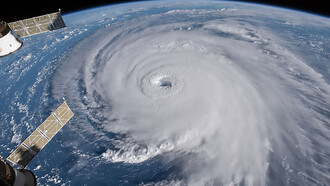Nairobi National Park is, in a sense, a modern wonder of the world. Nairobi has around four million people, close to half the population of London or New York. Yet the city is blessed with a national park, which is 117 square kilometres and has over 500 species of birds recorded. This extraordinary national park has large herbivores such as gazelles and zebras, and it is also complemented by the presence of large carnivores such as lions. For someone who lives and works in London, it is not hard to imagine a national park in a city’s suburbs. London has outstanding national nature reserves such as Richmond Park and Ruislip Woods in its suburbs. London and New York each have close to 9 million people, and both are making concerted efforts to rewild and bring wildlife back to the city. What is staggeringly different about Nairobi and its National Park is the size of the park and the presence of large carnivores. Imagine having lions in the backyard of your city!
This was not my first visit to Nairobi National Park. I had first visited it a few decades ago as a student backpacker. Back then, I had hired a local taxi to take me into the park. On subsequent visits to Kenya, I had used Nairobi as nothing more than the point of arrival, and as with many other safari visitors, I had headed straight out of the airport to one of the larger wildlife reserves, such as Samburu or the Masai Mara.
But two things have made me more interested in drawing attention to urban wildlife. Firstly, as someone who has served as Chair of the London Bird Club for eight years, I have become very interested in spreading the word that even large, populous cities can be good for wildlife. In fact, strange as it may sound, a city like London is one of the best places in the world for an aspiring naturalist to hone their skills as a naturalist. Secondly, I had been trying to draw attention to how good large Asian cities such as Colombo in Sri Lanka are for wildlife. Singapore and Kula Lumpur (in Malaysia) are other amazing biodiversity-rich cities with rainforest patches in the city centre. Over the years, I have reviewed a number of books for Struik Publishers that covered East African wildlife, including those that described Nairobi National Park as a wildlife destination. Therefore, I was keen that my family and I should spend a little time in Nairobi to see its wildlife and to compare it with other world cities I had visited.
After arriving in the morning at the Jomo Kenyatta International Airport, we drove to the Masai Lodge, one of the lodges situated on the borders of the park. The drive to the lodge initially takes you towards Nairobi from the airport on a route that happily takes you past Nairobi National Park. I could see mammals such as the Plains Zebra and Coke’s Hartbeest. Instead of continuing into the city centre, we turned off onto a road that skirted the park on its northern boundary and then along its western boundary, passing the Langata Gate. Outside of the park, I could see olive baboons and warthogs. The locals are accustomed to seeing such mammals on the roadside. But for visitors like me from a European city, it is rather extraordinary to see a variety of large mammals on the outskirts of a busy city. In ‘National Parks and Game Reserves of East Africa’ by Chris and Mathilde Stuart (published by Struik), I read that over a hundred species of mammals have been recorded in the national park. This would, of course, include small and nocturnal mammals such as bats and rodents, which are hard to see. But nevertheless, someone willing to do multiple game drives may also see a good number of the larger mammals.
We arrived at the Masai Lodge, where we were given some rooms that looked onto the park across a rocky gorge. It was not long before I saw my first mammals on the premises. On the grounds were Vervet monkeys, but they scurried away when I showed an interest. I was pleasantly surprised at how tolerant the Bush Hyraxes were. I have photographed hyraxes before, but here I was happy to be able to approach them close on foot. They are a special family of mammals confined to Africa. They are in their own scientific order, the Hyracoidea, which has just one family, the Procaviidae, with three genera containing five species. They are closely related to the elephants (Order Proboscidea) and the sea cows, or sirenians (manatees and dugong in the Order Sirenia). Together with the golden moles, otter shrews and tenrecs (Order Afrosoricida), aardvarks (Order Tubulidentata), and elephant shrews (Order Macroscelidea), all of these orders are placed in the superorder Afrotheria, which is believed to be a radiation of mammals with its origin in Africa.
Modern molecular phylogenetics confirms that these very different-looking mammals are indeed closely related to each other. Hyraxes have, however, been a puzzle in the past. Their family name Procaviidae means before the guinea pigs, a reference to the genus Cavia in which the guinea pigs are. However, guinea pigs are rodents (Order Rodentia) and are not closely related to the hyraxes, who are more closely related to elephants. Unfortunately, although the mistake was realized, they were named hyraxes from the Greek word for shrew mouse, which is no less misleading.
Being right next to the boundary of Nairobi National Park, the Masai Lodge was a wonderful place to get close to smaller mammals. Early in the morning and late in the evening, I also noticed larger mammals, such as zebras, besides the road leading to the lodge. The highlight for me was the day I was waiting at 5 a.m. for a transfer to the airport. In the morning gloom, I could make out three galagos (probably thick-tailed Greater Galagos) making their way along a wire into the surrounding trees to their daytime roost. The Masai Lodge is also a wonderful place to walk and birdwatch. I will have to pick that up in another article.















